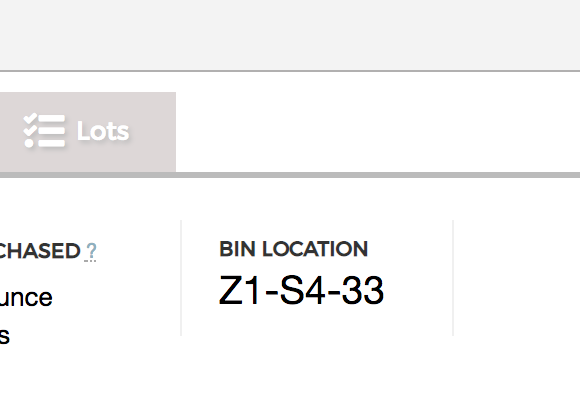Using Bin Locations to Manage your Inventory
We explore how to implement bin locations into your inventory management strategy to better organize your physical stock.
Managing inventory can be challenging for direct-to-consumer (DTC) brands, especially when it comes to physical stock. Without proper organization, it can be chaotic and time-consuming to locate specific items within your warehouse or storage facility.
One solution to this problem is implementing bin locations into your inventory management strategy. This involves assigning specific locations or bins for each product, creating a more streamlined and efficient process for storing and retrieving items.
Need to get your raw material and product inventory under control?
Try Craftybase - the inventory and manufacturing solution for DTC sellers. Track raw materials and product stock levels (in real time!), COGS, shop floor assignment and much more.
It's your new production central.
But how exactly can bin locations benefit your manufacturing business? Let’s explore the advantages below:
Improved organization: With designated bin locations, your team will always know where to find a specific item. This eliminates the need for constant searching and results in faster fulfillment times.
Increased inventory accuracy: By having a designated location for each product, it becomes easier to track and monitor inventory levels. This leads to fewer errors and ensures that you always have accurate stock counts.
Time-saving: With bin locations, your team can easily navigate and locate products within your warehouse or storage facility, saving time and increasing overall efficiency.
In addition to these benefits, bin locations also offer scalability. As your business expands and your product line increases, having designated locations for each item will make it easier to manage a larger inventory.
How to implement a warehouse bin system
Assess your inventory: Start by categorizing your products and determining how much space each category requires. This will help you determine the number of bins needed and where they should be located.
Label your bins: Use a clear and consistent labeling system for your bins, such as alphanumeric codes or color-coding. This will make it easier to identify and track products.
Train your team: Make sure everyone on your team is familiar with the bin locations and how to use them effectively. This will ensure a smooth transition and maximize efficiency.
Designing a bin numbering system
Designing a bin numbering system is integral to an effective bin location strategy. It creates a structured, repeatable process for identifying each bin, making inventory management more efficient and less prone to errors. The process begins by developing a consistent scheme that can be easily understood by all team members.
This could be as simple as using sequential numbers or as complex as incorporating alphanumeric codes that denote specific aisles, shelves, or product categories.
For instance, a bin marked A-3-2 might be located in aisle A, shelf 3, bin 2.
This level of detail provides a precise, unmistakable location for each item in your inventory. The key is to create a system that fits your specific needs and warehouse layout.
Remember, a solid bin numbering system is scalable—meaning it can adapt and grow with your business. As your product line expands, you can add new bins or sections while maintaining the same numbering logic. Finally, make sure to document your bin numbering system and provide thorough training to ensure everyone on your team understands and can effectively use it. This way, you’re leveraging bin locations to maximize your inventory management efficiency.
The “two-bin” inventory system
For businesses with smaller product lines or limited warehouse space, a two bin inventory system may be a more suitable option. This method involves having two designated bins for each product - one for active stock and one for reserve stock. Once the active bin is emptied, the reserve bin becomes the new active bin while a new reserve bin is filled. This helps to maintain accurate stock levels and prevents any disruptions in fulfillment.
While the two-bin method can be effective for some businesses, it may not be suitable for all. For businesses with a larger product range or high turnover of products, constantly refilling reserve bins can become time-consuming and inefficient. Additionally, this method requires a higher level of monitoring to ensure that stock levels are accurately maintained.
Tracking Bin Locations with Craftybase
Craftybase offers the ability to track bin numbers for your materials and products. This enables you to create a structured numbering system to track exactly where you keep each of your materials.
For makers managing dozens of fragrances, waxes, or other materials across a physical retail location, bin locations are essential. Tiana from Winding Wick Candles uses Craftybase’s bin location system in her Texas storefront to quickly locate specific fragrances, eliminating the search time that plagued her spreadsheet days: “I can say, ‘Okay, where is my apple fragrance?’ And it’s really easy to locate.”
![]()
There are three separate textboxes to enable granular tracking: if you are using a three part location code then you can use all three boxes. If your location system is a single code, then you can choose to enter this using the position field: it’s completely up to you.
You can assign as many materials as you like to the same bin location: this is really handy if you store many materials in the one place.
Bin Locations can be set manually, or via the bulk import and update material tool. Once set, your Bin Location will appear on the material detail page and in the hover over summary window.

